Crystal River Florida may be one of the best kept secrets in the U.S. This small town is located between Tampa and Gainesville and easy to get to, if you know what you are looking for. If you fly into Tampa and rent a car, the drive North is just over an hour or so if you take the tollway and use the SunPass system. It is worth checking with the rental car agency to be sure they are part of the program which allows you to use special lanes and bypass stopping to pay exact change at the numerous toll booths along the Veterans Expressway/Suncoast Parkway. This is the quickest way to Crystal River and it is a beautiful highway. There is not much other than farmland along this drive, so you might want to keep an eye out for the Spring Hill exit which has a Target store for snacks.
It is possible an unknowing tourist could drive right through Crystal River and not really know what all the fuss was about. The big draw here is the endangered manatee population which increases around November through March due to water temperature changes (manatees need water ~68°F or warmer to avoid hypothermia). Crystal River Florida (and specifically, Three Sisters Spring) is home to an amazing (yet unfortunately, decreasing) population of winter-visiting manatees. My recommendation is to make a trip here sooner than later if you have any interest in seeing them.
While there are many tour operators in this otherwise sleepy town, I received a tip from a friend that made my experience even better. Crystal River has a lot of rental properties that you can find online. The best place to stay is right on one of the canals in the Three Sisters Springs area. That way, you can drop a kayak off your dock and paddle right into the area where the manatees are most prevalent and also get into the secluded natural springs area where only kayaks and swimmers can enter. You just have to be careful when you kayak to cross safely in front of the boats and be sure they see you if you are in the water snorkeling or swimming.
Renting a property along the water can be more cost-effective than a hotel since most rentals provide kayaks. That allows you to avoid having to pay a tour company to take you to the manatees. The bigger benefit, though, is the ability to select your own timeline and duration to be in the water. Keep in mind that you will have extremely limited visibility before sunrise or after sunset due to limited natural light. Also, to avoid a ticket and fine, you need to have a lifejacket on your kayak when you are in the water.
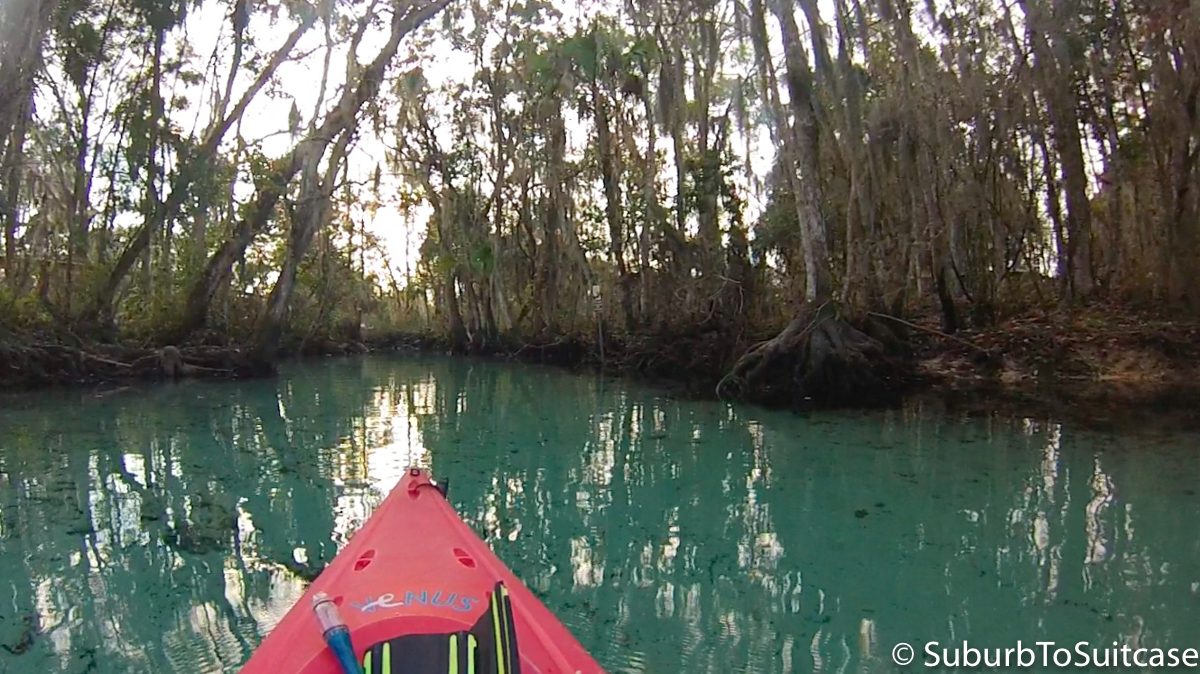
Kayaking through the crystal clear waters in Three Sisters Spring
You can tie up your kayak near the shore (there are lots of mangrove branches in the shallow water) and hop into the constant 72°F water. While this seems like it should be a comfortable temperature, remember that your body temp hovers around 98°F so you will want at least a 3mm full wetsuit and even some gloves. I wore boots on some occasions and full-foot fins on others and the experience was the same for me: cold. You do not really need the fins since it is a small space and not much swimming is actually required. The point is just to float around or carefully walk so as to not kick up too much silt from the bottom. Otherwise, the water will become very murky very fast. Near the shore and especially in the canals, there is a lot of muck. If you are squeamish about walking in this, definitely pack your dive boots.
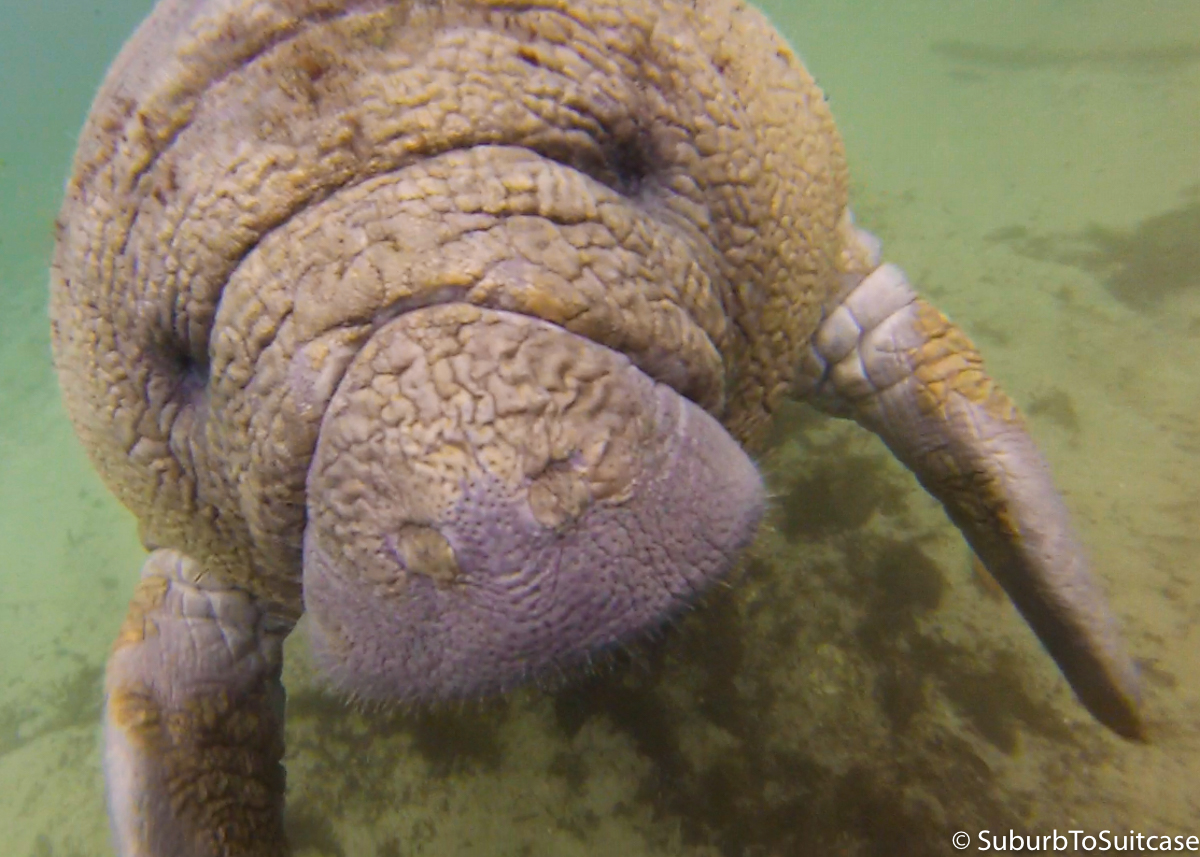
Curious Young Manatee
The springs area is beautiful – crystal clear shallow water, perfect for paddling in a kayak to see the peaceful wooded area. Sometimes the manatees hang out here because it is protected from motorized watercraft and other times, it is just a quiet place to relax in the kayak. Just outside the springs is a roped-off sanctuary where no one can enter. The manatees can come and go freely from this area of refuge but neither boats nor swimmers may enter. The Sheriff’s office patrols the channel and there are volunteers in the water as well. During certain times, you are prohibited from any land presence in the area, so be sure to check all the rules and regulations before you arrive. You can find more information here.
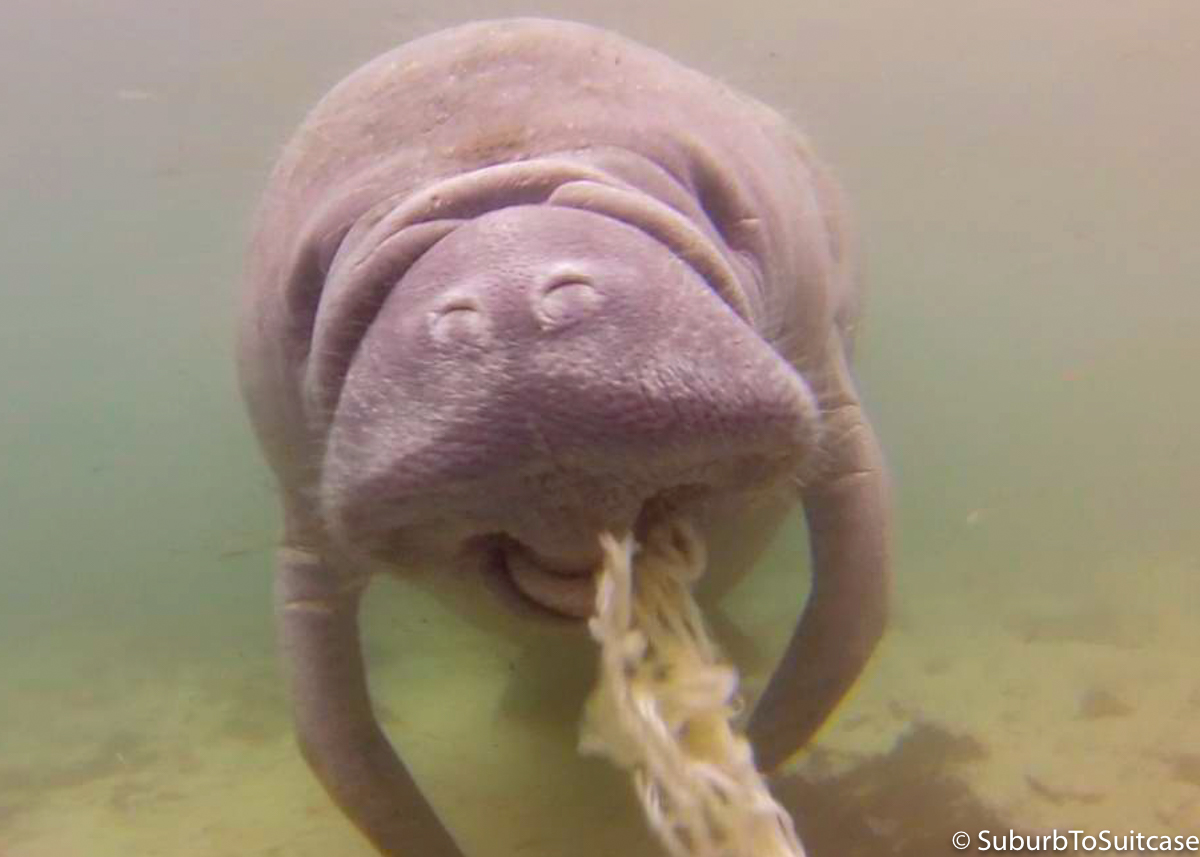
The young manatees love playing with boat anchor ropes.
On my trip, the manatees seemed most active, curious and playful when the water was lower and earlier in the morning but others reported that dusk was an even better time to see them because boats depart for the evening and the water is more clear. When I went out at dusk, there seemed to be fewer manatees, actually, and they were more inclined to be sleeping than playing. I think part of it is just chance and timing. One thing that was consistent through my visit was that the manatees love playing with the ropes connected to the boat anchors. This is fun because you can almost be guaranteed to see them when you stand near the boats. The drawback is that it is dangerous for the manatees to become so comfortable near propellers. It is no wonder why their backs are often marked with scars from boat encounters. It is smart to also let the boat captain know you are near the anchor to avoid any danger to yourself if you are snorkeling.
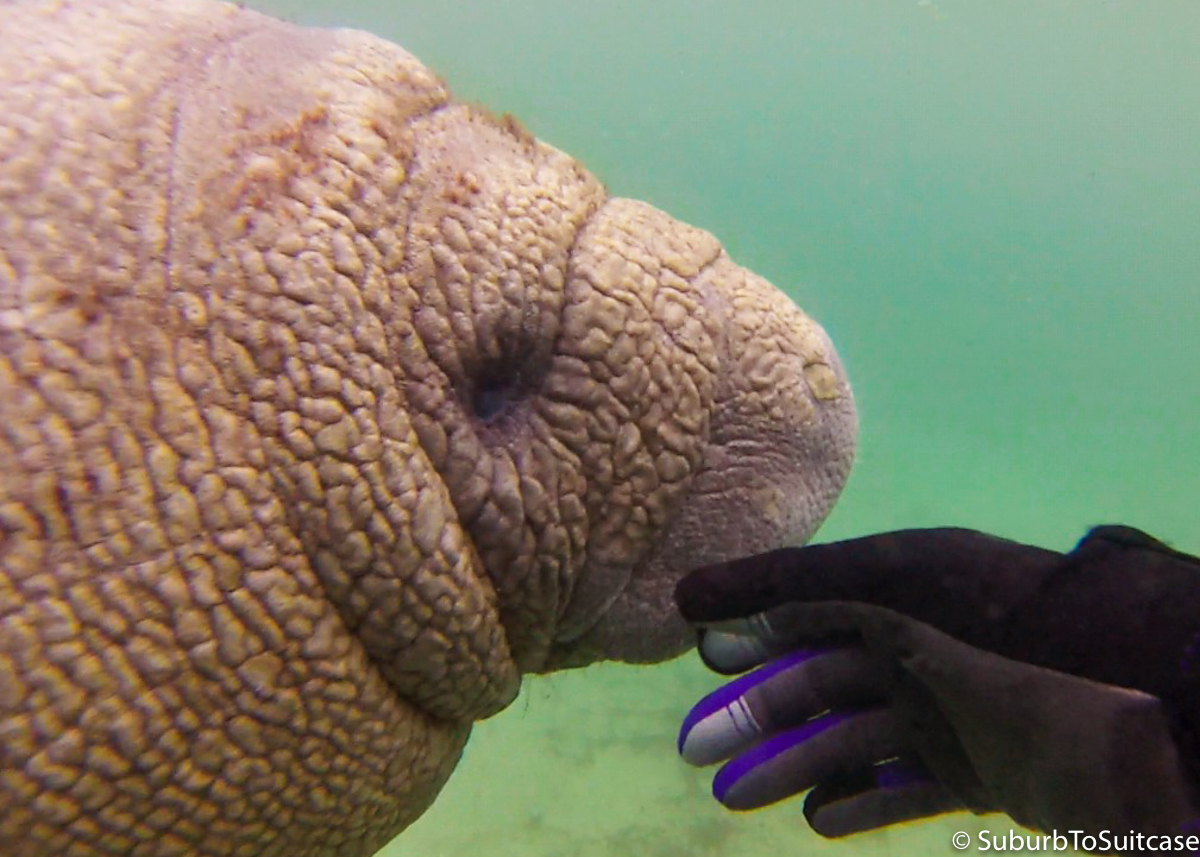
It is legal to interact with the manatees here under certain guidelines. Rule #1: The manatees need to come to you.
You can see from the video that the manatees range in size, coat and markings. The little ones are really playful but it is important not to separate them from their mothers. One person I met in the water mentioned that she watched a small calf nursing from its mother that morning. The younger manatees seemed to be the most playful and inquisitive when I was there and they were often sniffing my GoPro camera and gently nuzzling at my feet. As long as they approach you on their own, you can play with them all you want. You just need to be sure you give them room to surface for air whenever they want or need to. A resting/sleeping manatee will surface every 20-30 minutes or so, but the calves seem to come up for air more often. Something I noticed was that when the calves swim or rest with their mother, they tend to rise at the same intervals. One person I met told me that they rise for air even throughout their sleep – another good reason to give them space when they are on the bottom resting. No one wants to awaken a 3,500 pound animal unexpectedly!
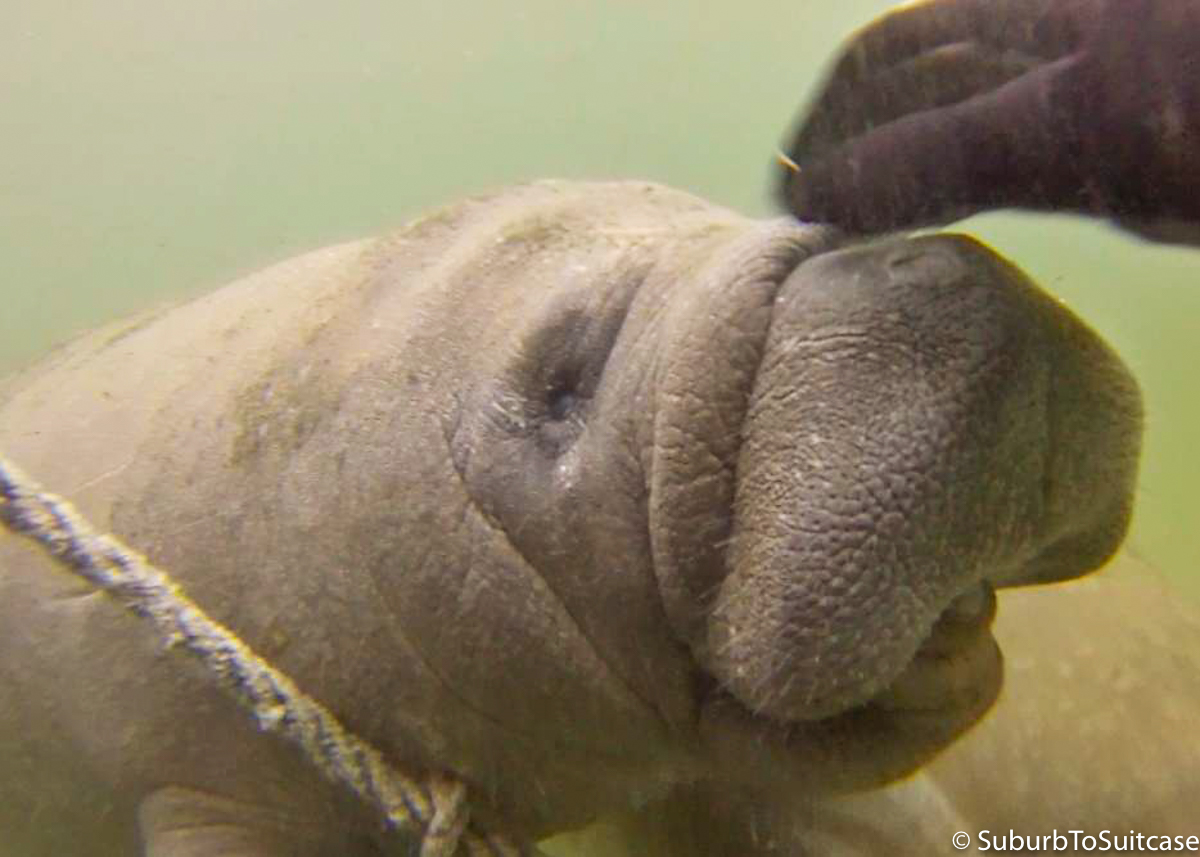
Playful little manatee
Other than the amazing interactions possible with these endangered wild manatees, there are additional forms of wildlife present on and in these waters. If you are lucky, you can spot a loon or a big snapping turtle swimming by (just watch your fingers and toes!). Divers, while you are in the area, check out the freshwater dive sites of Devil’s Den and Blue Grotto (less than an hour away by car) – a nice contrast to the larger cenotes in Mexico.
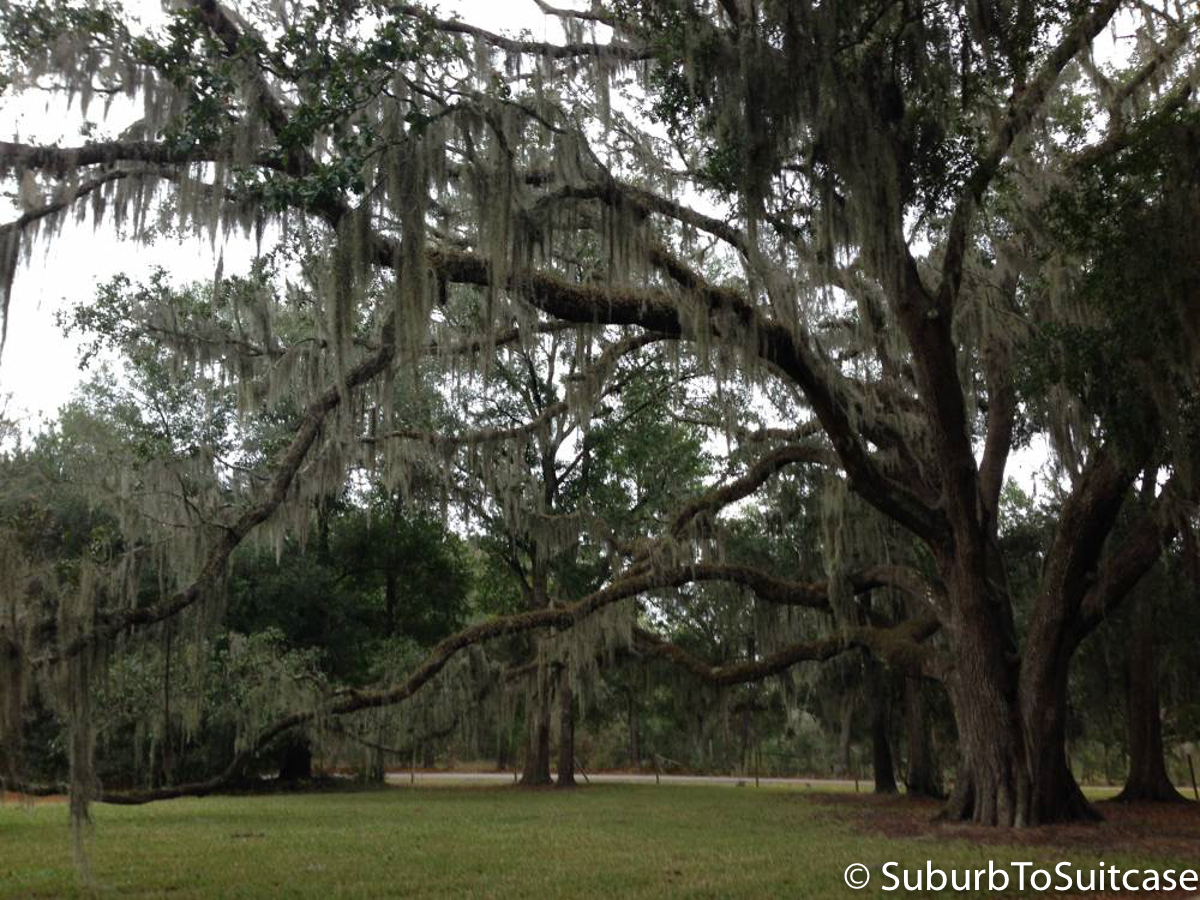
Mossy trees line the entrance to the ranch in Williston, Florida
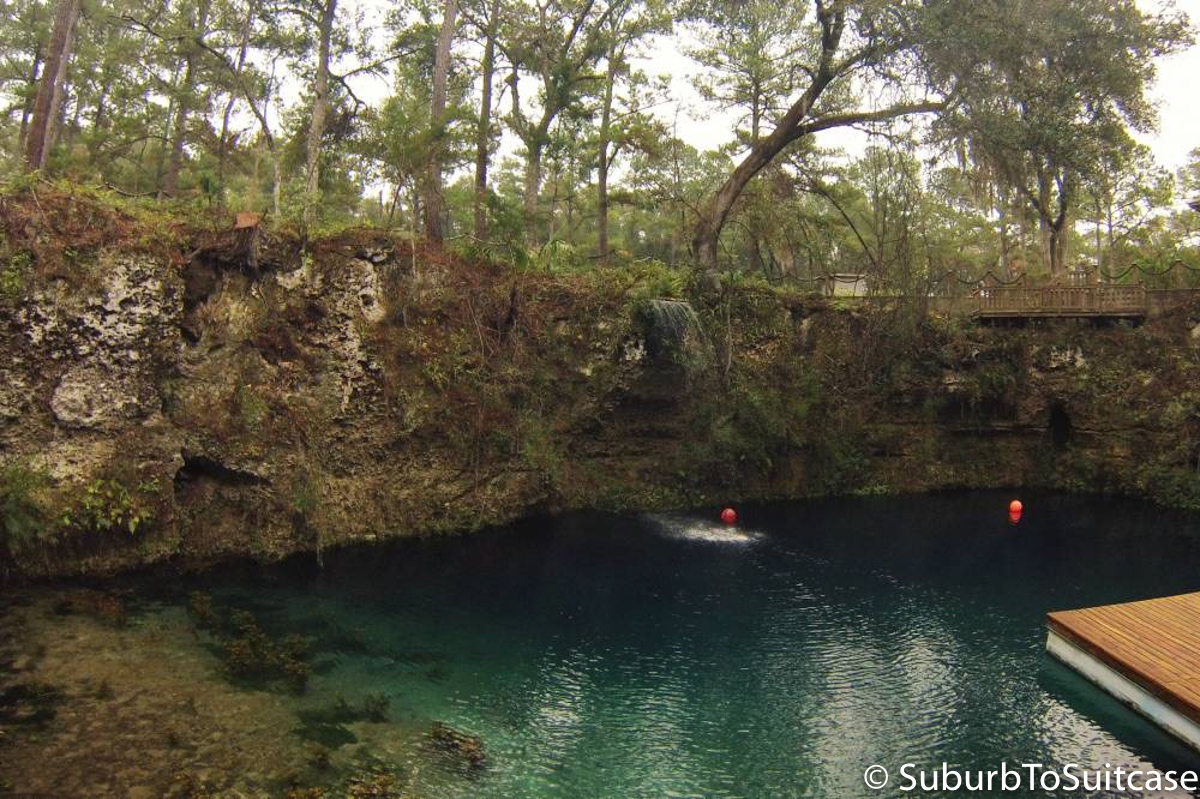
The waterfall was beautiful at the entrance to Blue Grotto’s freshwater cavern. The lower chamber was ~90 feet and with the water temperature at 70°, it was a chilly dive.
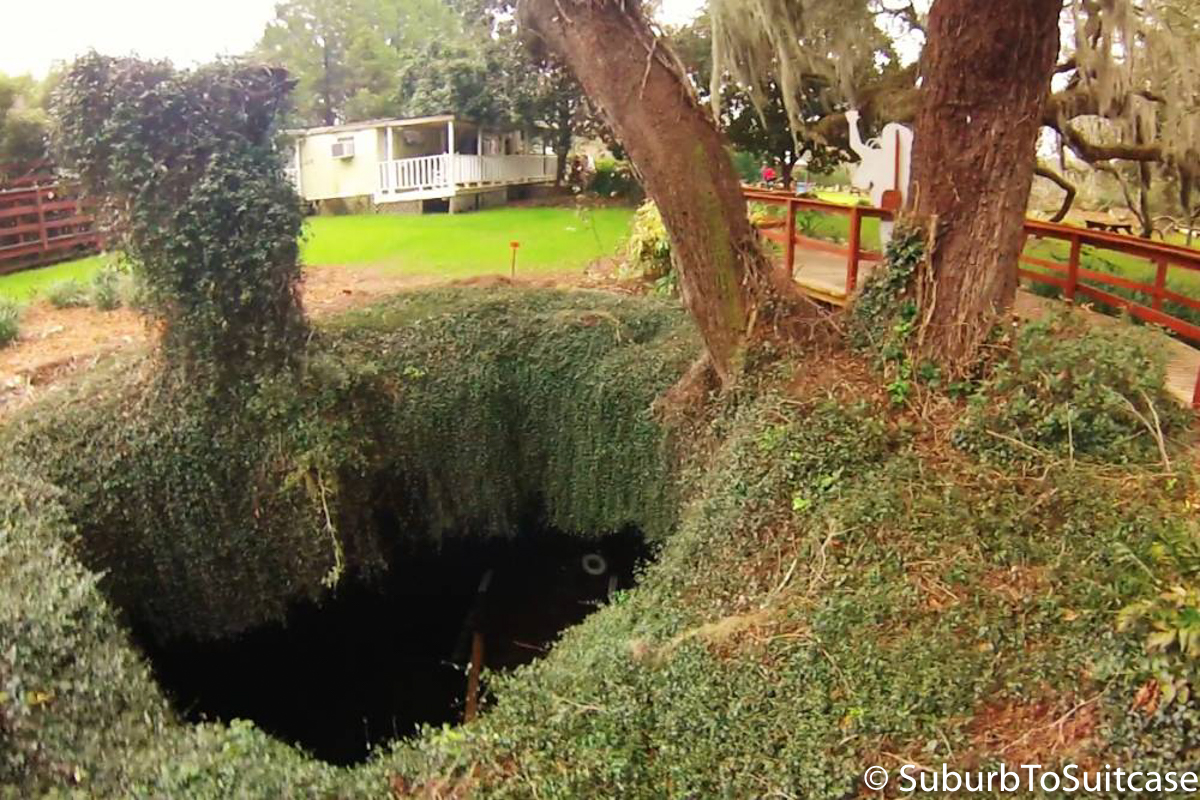
Devil’s Den is a freshwater sinkhole cavern full of small swim-throughs. The entrance is particularly lovely with steep stairs and a “only one person at a time” ladder down to the platform. The depth is a shallow 45 feet with 70° water temperature.
